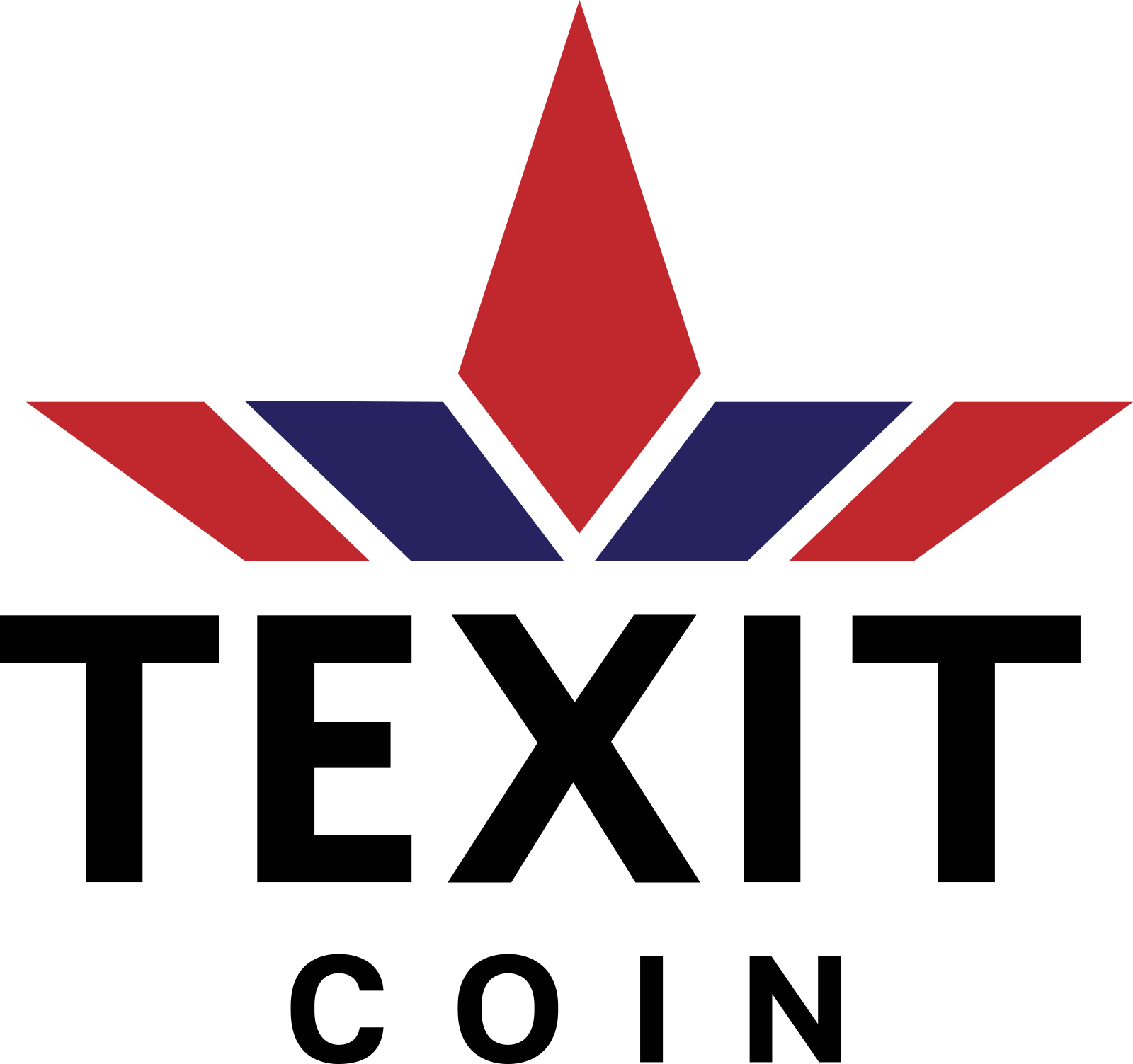 Crypto & Texit Coin
Crypto & Texit Coin
The treasury model: Why corporations and nations hold crypto
In recent years, companies and countries have increasingly included cryptocurrencies in their treasury strategies. Traditionally, corporate treasuries relied on cash, gold or government bonds to maintain value, ensure liquidity and provide financial stability. Governments had gold reserves to back their currencies.
However, cash loses purchasing power. Bonds carry rate and duration risk. Foreign exchange shocks hit balance sheets without warning. Ideally, you want a reserve that holds value, moves fast across borders and plugs into digital rails. That is why Bitcoin (BTC), Ether (ETH) and, in some cases, stablecoins now sit beside cash, gold and T-bills.
For corporations, the brief is simple: hedge inflation, diversify currency exposure, keep 24/7 liquidity and test digital settlement. For sovereigns, meanwhile, the brief expands to strategic reserves, sanctions resilience and access to neutral, global liquidity.
Bitcoin treasuries: The digital gold standard
Since its inception, BTC has held a unique position as the first and most well-known cryptocurrency, often referred to as the digital equivalent of gold. It is an appealing option for treasuries looking to safeguard against inflation and risks associated with traditional currencies.
Senator Cynthia Lummis in the US has proposed a bill called the Bitcoin Act. If it becomes a law, the bill would require the US Treasury to acquire 1 million BTC over five years for a federal reserve. Earlier, in March 2025, President Donald Trump announced the Strategic Bitcoin Reserve, a reserve asset funded by the US Treasury’s forfeited BTC.
El Salvador gained attention in 2021 by adopting BTC as legal tender, while countries such as Bhutan have quietly included Bitcoin in their reserves. In the corporate world, Strategy is known for continuously acquiring BTC, making it the main asset in its treasury.
Bitcoin offers several advantages. It is highly liquid due to active global markets, scarce because of its limited supply and widely recognized across the financial world. To make earnings with BTC lying idle, you need to pair it with external lending or derivatives strategies.
While it does have its drawbacks, like price volatility affecting balance sheets, the positives outweigh the negatives.
Did you know? Semler Scientific emulated Strategy but at a smaller scale. The firm added 210 more BTC to its balance sheet, acquiring the additional coins from July 3 to July 16 for approximately $25 million at the time, or an average price of $118,974 each.
Ether treasuries: The programmable alternative
While BTC remains the cornerstone of crypto treasuries, Ether has gained traction as an attractive alternative, particularly after its 2022 shift to proof-of-stake (PoS), known as the Merge. This change reduced energy consumption and introduced staking, which generates annual returns of 3%-5%, making ETH a productive asset unlike BTC. For treasuries, this positions ETH as both a store of value and a source of income.
Ethereum’s ecosystem adds to its value. Through decentralized finance (DeFi), treasuries can access liquidity without selling their holdings. The growing use of tokenized real-world assets, such as bonds or commodities, strengthens Ethereum’s role as a financial platform.
Institutional adoption of ETH is increasing. Companies are starting to hold ETH, and asset managers have introduced Ether-based exchange-traded funds (ETFs) for regulated investment.
Even decentralized autonomous organizations (DAOs) are using ETH as a reserve to ensure long-term stability.
However, challenges remain. Regulatory uncertainty in major markets, risks related to staking performance and Ethereum’s technical complexity create hurdles. Despite these, in 2025, ETH stands out as a versatile treasury asset, combining value storage, income potential and practical utility.
Did you know? Long before ETH ETFs launched in 2024, institutions gained exposure through Grayscale, showing early institutional faith in Ether.
2025 data: Comparing Bitcoin and Ether treasury holdings
As of Sept. 10, 2025, BTC remains the leading choice, with companies and institutions holding over 1 million BTC. ETH, though less widely held, is gaining popularity, with corporations, DAOs and asset managers increasingly adding ETH to their reserves.
Data from blockchain analytics highlights different strategies: Bitcoin treasury holdings are typically kept idle for long-term storage, while a larger portion of Ether holdings is actively staked, earning steady returns.
As of Sept. 10, 2025, Strategy alone controls approximately 638,460 BTC worth billions in valuation, highlighting a long-term hodl strategy focused on holding rather than generating yield.
The number of listed firms holding BTC grew from 70 in December 2024 to 134 by mid‑2025, accumulating nearly 245,000 BTC.
This difference in returns between Bitcoin and Ether is significant. BTC serves as a stable but passive reserve, while Ether’s 3%-5% staking yields make it a more active, income-generating asset, illustrating the choice between Bitcoin’s reliability and Ether’s growth potential.
Considering ETH reserves, as of Sept. 10, 2025, 73 entities held 4.91 million ETH, worth $21.28 billion. Bitmine Immersion Tech (BMNR) was the top holder of Ether with 2.07 million ETH, worth $9 billion. SharpLink Gaming (SBET) comes second with 837,230,000 ETH, worth $3.7 billion.
What are dual strategies?
As the cryptocurrency market matures, some governments and corporations are adopting a dual treasury strategy by holding both BTC and ETH. This approach combines Bitcoin’s stability and global recognition as a reserve asset with Ether’s potential for generating yield and its programmable features.
Here are two examples of dual treasury strategies.
United States federal government (Strategic Crypto Reserve)
-
BTC Reserve: In March 2025, an executive order set up the US Strategic Bitcoin Reserve, which holds an estimated 198,000-207,000 BTC (approximately $17 billion-$20 billion), as of Sept. 9, 2025, obtained through seizures and other means.
-
ETH allocation: A US Digital Asset Stockpile has been created for non-Bitcoin assets, including Ether. As of Aug. 29, 2025, this stockpile contained approximately 60,000 ETH, worth around $261 million, according to an Arkham Exchange analysis of government-owned addresses.
BitMine Immersion Technologies (BMNR)
-
BTC Holdings: BitMine, a company focused on crypto mining and treasury management, maintains a moderate Bitcoin reserve of 192 BTC worth over $21 million, as of Sept. 10, 2025.
-
ETH Holdings: As mentioned before, Bitmine Immersion Tech (BMNR) holds 2.07 million ETH, with an estimated value of approximately $9 billion, as of Sept. 10, 2025.
This dual-asset approach highlights BitMine’s shift from solely Bitcoin mining to a diversified crypto reserve strategy. It is now more focused on combining Bitcoin’s value preservation with Ether’s income-generating potential.
Did you know? Institutions are issuing billions of dollars in tokenized government bonds directly on the Ethereum blockchain, intertwining ETH with TradFi.
Which strategy is winning in 2025?
The competition between BTC and ETH treasuries showcases their unique strengths. As of mid-2025, the trend points to a future where treasuries may increasingly adopt both assets.
BTC, for instance, stands out for its stability, widespread trust and global recognition, acting as the crypto world’s “reserve currency.” Its role as digital gold makes it the preferred choice for institutions and nations focused on long-term wealth preservation and straightforward liquidity.
Ether, on the other hand, has gained traction due to its ability to generate income, offer practical utility and support a growing ecosystem of tokenized assets. Treasuries holding ETH can earn 3%-5% annual returns through staking, access liquidity through DeFi and engage in markets for tokenized real-world assets, positioning ETH as an active, income-producing reserve.
The choice depends on goals. Bitcoin suits those prioritizing capital security and established trust, while Ether attracts those seeking growth and income potential. While BTC currently leads in total treasury holdings, ETH is catching up by drawing companies and DAOs that value its programmable financial features.

